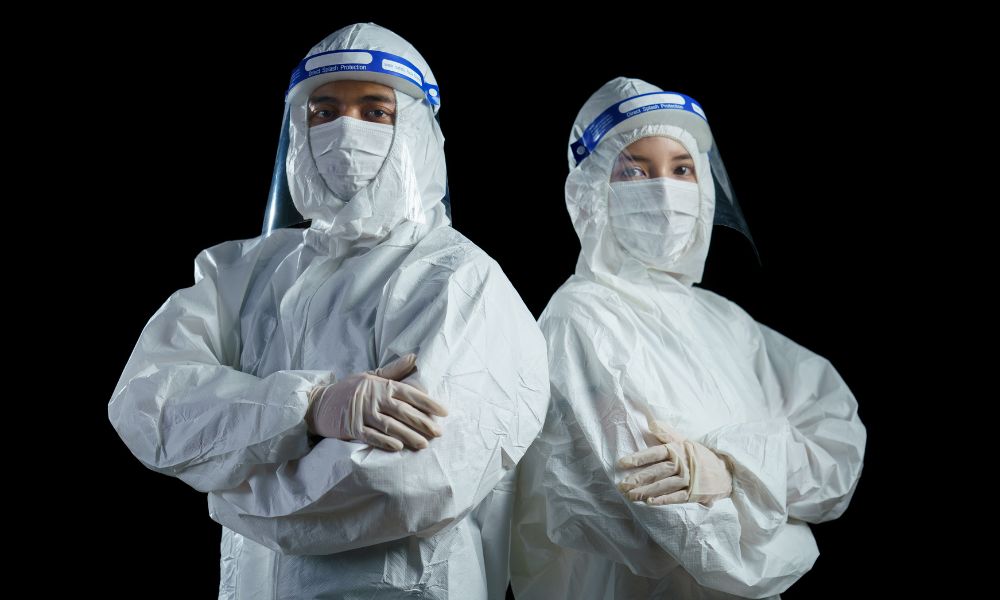
When we hear the term PPE, most of us immediately think of the medical field since nurses and doctors wear personal protective equipment daily. However, PPE is useful in many occupations. Not all PPE is the same since professionals in each industry have different needs. Read on to learn more about the six most common types of PPE and who uses it.
Eye Protection
Protecting the eyes is essential in many industries. This form of PPE guards against sparks, bodily fluids, chips and shavings of metal or wood, and other debris. Eye protection PPE is usually in the form of:
- Face shields
- Safety glasses
- Welding helmets
You’ll see eye protection in industries such as:
- Construction
- Laboratories
- Welding
- Maching
- Healthcare
Head Protection
PPE headwear protects the head from extreme temperatures, falling objects, or a risk of bumping into something or falling. You’ll see head protection PPE in the form of:
- Hard hats
- Headwear
- Bump caps
You may see construction workers wearing hard hats quite often when you are out and about, but other industries require head protection as well. Here are a few industries that need head protection PPE:
- Construction
- Mining
- Engineering
- Industrial work
Hearing Protection
Professionals in some occupations face loud, steady noises all day long, which can lead to tinnitus and long-term hearing loss. The best way for individuals in these situations to protect themselves is with hearing protection PPE. There are only two forms of hearing protection: earmuffs and earplugs.
PPE earmuffs aren’t like the fuzzy ones you might wear in the winter. They are like foam-covered headphones that drown out sound. Some professionals requiring hearing protection PPE include:
- Lawncare crews
- Airport runway employees
- Music venue workers
- Stadium workers
- Machinists
- Mechanics
Foot Protection and Leg Protection
Often, the same occupations that need foot protection also need leg protection. Foot protection PPE is necessary for jobs where there is a risk of heavy objects falling on someone’s feet or a foot hitting machinery, which could cause damage.
Industries like firefighting have a long history of PPE and were some of the first to use leg protection to protect firefighters from scratches or intense heat and flames. Firefighters continue to use this critical piece of equipment, and so do other industries, such as a variety of manual laborers.
You’ll see foot and leg protection in the following forms:
- Fire-resistant pants and boots
- Steel toe boots
- Insulated boots
- Welder’s spats
- Insulated pants
Respiratory Protection
Since the pandemic, we have all become familiar with respiratory protection; however, some industries have known it well for many years. Respiratory PPE protects workers from airborne viruses, germs, and particles. The most common option is the respiratory mask. The following professionals use respiratory PPE:
- Healthcare workers
- Demolition workers
- Miners
- Factory workers
- Laboratory workers
Hand Protection
Hand protection may be the most common of all PPE. It’s helpful in any type of manual labor and can come in one of several types of gloves, including:
- Impact resistant gloves
- Insulated gloves
- Cut-resistant gloves
- High-visibility gloves
The list of manual laborers who benefit from hand PPE is long, but a few you may recognize are the following:
- Construction workers
- Welders
- Mechanics
- Landscaping crews
PPE is essential for several occupations and workers. If you are in one of the industries that uses one of the six types of PPE, never try to work without it.






